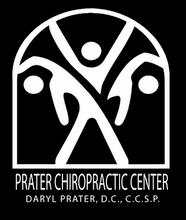
Today’s technology makes heart rate training easier than ever…..now there are even GPS systems available with a built in heart rate monitor feature. Heart rate monitors are the most effective way to measure your heart rate while running. They are accurate and you can check your heart rate without having to stop. As you may have discovered, it is difficult to obtain an accurate reading by checking pulse. It is easy to miss beats and your heart rate begins to slow quickly when you stop. Your heart rate is an important tool in your training arsenal: it provides valuable feedback on your training intensity because it determines how hard your heart is working while exercising.
Before strapping on the sophisticated hardware and taking off, it is important to understand how to determine the appropriate heart rate for you, and for a particular training intensity. How do you determine the appropriate heart rate for a particular workout? Training can be based on a percentage of one of 2 different methods:
A percentage of your maximum heart rate (MHR) OR
A percentage of your heart-rate reserve (HHR)
Heart-rate reserve is a little more accurate than maximum heart rate, but it requires a little more arithmetic. HHR is your maximal heart rate minus your resting heart rate. It estimates the percentage of your VO2 Max at which you are working and shows how much your heart rate can increase with exercise. For example, if Bill’s maximal heart rate is 200 and his resting heart rate is 45, his heart rate reserve will be 155.
There are several age-based formulas available for determining maximal heart rate, but these only estimate an average for persons of a given age and are fairly inaccurate. Your actual maximal heart rate could be as many as 20 beats below or above the average for your age. Unless you fall right in the middle of the bell curve, if you base your training on this, you could be training far too easy or too hard.
Fortunately, there still is a simple, yet much more effective way of determining your maximal heart rate. Do a good warm up then run several striders. After you have warmed up thoroughly, run very hard for 2 minutes using a heart rate monitor. If you have run as hard as you can, you will be within 2 or 3 beats per minute of your maximal heart rate by the end of the run. If you aren’t sure if you gave an all out effort, jog 10 minutes then repeat the test to see if the results are similar. You may find you get a slightly higher heart rate if you perform the test uphill.
Once you have your maximal heart rate, you can determine what the target heart rate should be for a given workout using the chart below. For example, if Bill wants to do a long endurance (E) run he will want to keep his heart rate below 75% of maximal heart rate. Since his maximal heart rate is 200, his goal will be to keep his training heart rate below 150 (.75 x 200) when applying the maximal heart rate method of calculation. Likewise, when performing a lactate threshold (LT) run, Bill will want to keep his heart rate between 80 – 92% of maximum.
The slightly more accurate heart-rate reserve method is calculated using the following formula:
Heart-rate reserve (HRR) = maximal heart rate – resting heart rate
Target Heart-rate = resting heart rate + heart rate reserve (HRR) x appropriate percentage of HRR.
Your resting heart rate is your heart rate when you first wake up in the morning. In order to get your resting heart rate, take your pulse over the course of a few days and take an average to get the most accurate result. If you normally use an alarm clock to wake, take your pulse during days when you can wake naturally. The alarm clock startles you into waking up with a higher heart rate.
Once you have both maximal heart rate and resting heart rate, you can calculate the appropriate target heart rate for a particular training intensity using the chart below. For Example, Bill has a maximal heart rate of 200 and a resting heart rate of 50. If he wants to perform a VO2 max workout at 95% of Heart-rate reserve, his target heart rate will be calculated as follows:
200 (maximal heart rate) – 50 (resting heart rate) = 150 (heart-rate reserve)
50 (resting heart rate) + 150 (heart-rate reserve) * .95 (appropriate percentage for VO2Max = 193. Bill’s target heart rate for a VO2 Max workout is 193.
Target Heart-Rate Training Intensities:
Training Type Percent VO2 Max Percent HRR Percent Max
Heart Rate
Speed Faster than VO2 Max Not Applicable Not Applicable
VO2 Max 95-100% 95-98% 95-98%
Lactate Threshold 75-90% 75-90% 80-92%
Endurance 65-80% 65-80% 75-85%
Recovery <70% <70% <75%
Heart rate can be affected by factors other than exercise including caffeine, dehydration and running in the heat. If you are running on a hot day, your heart rate will increase several beats per minute as you progress because your blood volume decreases and more blood is being sent to the skin for cooling purposes. This increases your heart rate to supply enough oxygen to your working muscles. You will need to take this into consideration on a very hot day. If your target heart rate is 145 normally, you may want to allow an increase of 5 beats per minute or 150. Beyond this, however, it is wise to slow your pace to stay within the adjusted range.
Reference: Pfitzinger, P., and S. Douglas. 1999. Road Racing for Serious Runners. Champaign, IL: Human Kinetics















